CIID 09/10: Computational Design

I’ve fallen behind with my updates; doing has taken over from writing about what has been done. Nonetheless, a brief summary of the next course on our programme – I’ll try to catch up. “Exploring the manifold potential of software” is how this course on computational design, taught by Patrick and Dennis from Berlin based The Product, was described. In short, we were introduced to programming and code in a design context, and explored how this tool – new to some – could be applied to the context of design – new to others.
The primary tool for the two week course was Processing, a software language and environment designed to enable designers and artists to access the generative power of code and to prototype and produce interactive work. The skill-levels in the class ranged wildly, from those who’d never encountered a Hello World program before to others who can code in their sleep (and probably dream in code, too, but that’s a different issue).
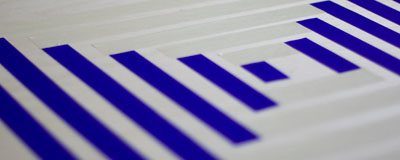
As a first introduction to code in a visual way, we were asked to write some instructions (however we saw fit) on a piece of paper; the person next to us would then attempt to interpret, compile, and execute this code using two colours of tape. Cut a piece of tape this long. find a horizontal wall. stick it here, at this angle. take another piece of tape, and stick it at 90 degrees to the previous one. repeat the two previous steps until... and so on. As well as being fun – instructions ranged from simple patterns and recursive generative patterns to marking people with tape as they walked past – It served as an illustration of the need for clear, unambiguous instructions and the need to give all necessary information upfront. Debugging code when your computer is a person is an educational experience, too!
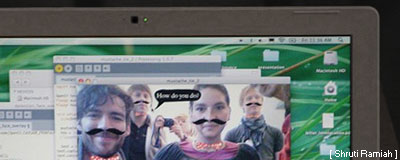
We were then introduced to openCV, a computer vision library, with which we experimented with face tracking, people tracking, and creating interactive applications, with regular mini-excursions introducing us to work created with similar tools to the ones we were encountering, and some of the different directions taken by other artists and designers. Among others, we discussed 3D generative objects and architecture; procedural maths in nature; virtual physics and particle simulation; artificial intelligence.
During the second week, we were tasked with creating a final project for the course, either in the form of an interactive program or installation, or a poster. Some people took the computer vision direction further, combining the input from a webcam with code in processing. Some of these displayed the image back, augmented with elements that reacted to the tracked faces. Others used things like Reactivision icons/codes to track objects in space, creating a tangible interface to an application – such as painting in mid-air (Eric) or the particle system shown below (Ishac – more on his awesome project here).
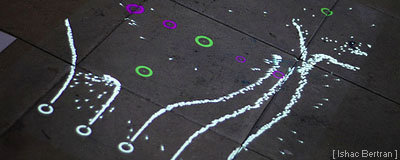
Others, including myself, chose to work on posters as our output. Some of the posters used various tracking methods as data input for their program, while I decided to work with a static data set, trying to visualize 4 day’s worth of power readings from a household in a legible way, that might encourages the reading and telling of stories from and around the data. You can learn more about my poster here.
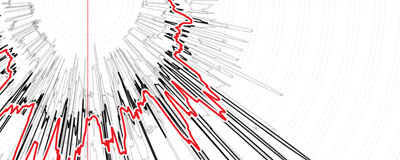
As well as enjoying the process of getting the code to do what I had planned and imagined, there was a pleasure in combining the code, the numbers, the maths, with the beautiful physicality of ink on paper. We had the posters printed in A1 size – and for all the interactivity, brightness, cleanness of a screen, there’s definately something to be said for large-format prints, not only in pure impact, but in allowing fine detail to come to the fore.
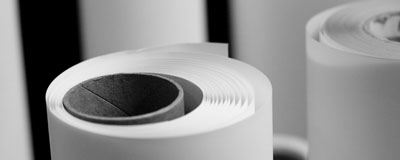
FURTHER READING:
Photos of the Exhibition (Jen)
Comments are closed
Comments are currently closed on this entry.